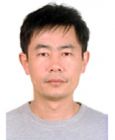俞聪
人物简介
余聪博士,北京师范大学认知神经科学与学习国家重点实验室视觉心理物理学实验室研究员
余聪博士,研究员。1985年华东师范大学心理系本科毕业,1995年获美国University of Louisville 实验心理学博士学位,1995年至2003年分别在University of Houston和University of California, Berkeley做博士后研究,2003年9月至2006年1月任中国科学院神经科学研究所研究员(百人计划),2006年2月到北京师范大学认知神经科学与学习国家重点实验室工作,2007年开始任Vision Research编委。
目前研究受国家杰出青年科学基金(2008-2011)和北京师范大学长江学者特聘教授配套基金(2008-2010)资助。
每年招收理工医学本科毕业的直博生。
地 址:北京师范大学认知神经科学与学习实验室英东楼324室
邮 编:100875
Email: yucong#bnu.edu.cn
电 话:86-10-58806094
研究兴趣
本实验室运用心理物理学(行为)方法,并结合脑成像等手段,研究人类视觉过程。目前主要研究兴趣在于知觉学习的心理物理学与脑机制,视锐水平汉字识别的视觉机制,以及知觉组织。
在知觉学习研究方面,我们发现同时对多个视觉刺激的知觉学习依赖于刺激的时间模式编码, 当刺激的时间模式固定时才能获得好的学习效应,而随机时间模式无法产生学习效果,首次揭示了时间因素在知觉学习中的重要作用(Nature Neuroscience, 2005)。我们进一步的研究表明,大脑同时学习多个刺激时,需要在概念或语义水平对不同的感觉刺激进行识别,而刺激的时间模式即通过其固有的刺激次序和节奏来帮助大脑识别多个感觉刺激(PLoS Biology, 2008)。此外我们还运用double training的新实验范式,对知觉学习的基本特征,即位置与特征的特异性进行研究,发现知觉学习可以在不同的网膜位置(Current Biology, 2008)和朝向之间进行迁移。这些发现表明知觉学习的神经机制可能在于影响知觉注意与决策的高级脑过程。
在汉字识别的心理物理学研究方面,我们发现笔划数对汉字识别的大小阈限只有有限的影响,而刺激间的几何矩差能较好地模拟根据识别错误建立的混淆矩阵 (confusion matrix)。这些结果证明汉字识别阈限主要受刺激的总体特征所决定, 而较少受细节特征的影响。这一研究对决定视锐的视觉机制作出了明确的描述, 具有重要的理论和临床意义(IOVS, 2007;Journal of Vision, 2008)。我们还对汉字识别在周边视觉的表现及相关的视觉拥挤现象(visual crowding)做了研究,发现了周边视觉汉字识别存在着内部拥挤现象,以及top-down因素对视觉拥挤的影响(Vision Research, 2009)。最新的研究则发现,相当成分的视觉信息在视觉拥挤过程的影响下并没有如当前理论所假设的丧失在识别过程中,而是在视觉记忆或注意过程中出现了错位。这一发现为视觉拥挤现象提供了新的认识。
在轮廓整合与知觉组织研究方面,我们在对周边视觉轮廓整合的实验中, 发现在减少刺激不确定性后, 周边视觉中的轮廓整合能力与中心视觉相当 (Journal of Vision, 2006)。最近的研究兴趣在轮廓整合的时间与空间特征。
论文专著
1.
Liu, L., Klein, S.A., Xue, F., Zhang, J.Y., & Yu, C. (2009). Using geometric moments to explain human letter recognition near the acuity limit. Journal of Vision, 9(1):26, 1-18. pdf
2.
Zhang, J.Y., Zhang, T., Xue, F., Liu, L., & Yu, C. (2009). Legibility of Chinese characters in peripheral vision and the top-down influences on crowding. Vision Research, 49, 44-53. pdf
3.
Xiao, L. Q., Zhang, J.Y., Wang, R., Klein, S. A., Levi, D. M. & Yu, C. (2008). Complete transfer of perceptual learning across retinal locations enabled by double training. Current Biology, 18, 1922-1926. pdf
4.
Zhang, J.Y., Kuai, S.G., Xiao, L. Q., Klein, S. A., Levi, D. M. & Yu, C. (2008). Stimulus coding rules for perceptual learning. PLoS Biology, 6, 1651-1660.
5.
Zhang, J.Y., Zhang, T., Xue, F., Liu, L., & Yu, C. (2007). Legibility of Chinese characters and its implications for visual acuity measurement in Chinese reading population. Investigative Ophthalmology & Visual Science, 48, 2383-2390. pdf
6.
Levi, D.M., Yu, C., Kuai, S.G., & Rislove, E. (2007). Global contour processing in amblyopia. Vision Research, 47, 512-524. pdf
7.
Kuai, S.G. & Yu, C. (2006). Constant contour integration in peripheral vision for stimuli with good Gestalt properties. Journal of Vision, 6, 1412-20. pdf
8.
Kuai, S.G., Zhang, J.Y., Klein, S. A., Levi, D. M. & Yu, C. (2005). The essential role of stimulus temporal patterning in enabling perceptual learning. Nature Neuroscience, 8, 1497-1499. pdf
9.
Yu, C., Klein, S.A., & Levi, D.M. (2004). Perceptual learning in contrast discrimination and the (minimal) role of context. Journal of Vision, 4,169-182. pdf
10.
Yu, C., Klein, S.A., & Levi, D.M. (2003). Cross- and iso- oriented surrounds modulate the contrast response function: The effect of surround contrast. Journal of Vision, 3,527-540. pdf
11.
Yu, C., Klein, S.A., & Levi, D.M. (2002). Facilitation of contrast detection by cross-oriented surround stimuli and its psychophysical mechanisms. Journal of Vision, 2, 243-255. pdf
12.
Yu, C., Klein, S.A., & Levi, D.M. (2001). Surround modulation of perceived contrast and the role of brightness induction. Journal of Vision, 1, 18-31. pdf
13.
Yu, C. & Levi, D.M. (2000). Surround modulation in human vision unmasked by masking experiments. Nature Neuroscience, 3, 724-728. pdf
14.
Yu, C. & Levi, D.M. (1999). The time course of psychophysical end-stopping. Vision Research, 39, 2063-2073.
15.
Yu, C. & Levi, D.M. (1998). Rectification nonlinearity in cortical end-stopped perceptive field. Vision Research, 38, 3517-3530.
16.
Yu, C. & Levi, D.M. (1998). Spatial frequency and orientation tuning in psychophysical end-stopping. Visual Neuroscience, 15, 585-595.
17.
Yu, C. & Levi, D.M. (1998). Naso-temporal asymmetry of spatial interactions in strabismic amblyopia. Optometry and Vision Science, 75, 424-432.
18.
Yu, C. & Levi, D.M. (1997). Spatial facilitation predicted with end-stopped spatial filters. Vision Research, 37, 3117-3127.
19.
Yu, C. & Levi, D.M. (1997). Cortical components of the Westheimer function. Vision Research, 37, 2535-2544.
20.
Yu, C. & Levi, D.M. (1997). End-stopping and length-tuning in psychophysical spatial filters. Journal of the Optical Society of America A, 14 , 2346-2354.
21.
Yu, C. & Levi, D.M. (1997). Cortical end-stopped perceptive fields: Evidence from dichoptic and amblyopic studies. Vision Research, 37, 2261-2270.
22.
Yu, C. & Essock, E.A. (1996). Spatial scaling of end-stopped perceptive fields: Differences in neural bases of end-zones, flanks, and centers. Vision Research, 36, 3129-3139.
23.
Yu, C. & Essock, E.A. (1996). Psychophysical end-stopping associated with line target. Vision Research, 36, 2883-2896.
附件列表
词条内容仅供参考,如果您需要解决具体问题
(尤其在法律、医学等领域),建议您咨询相关领域专业人士。

